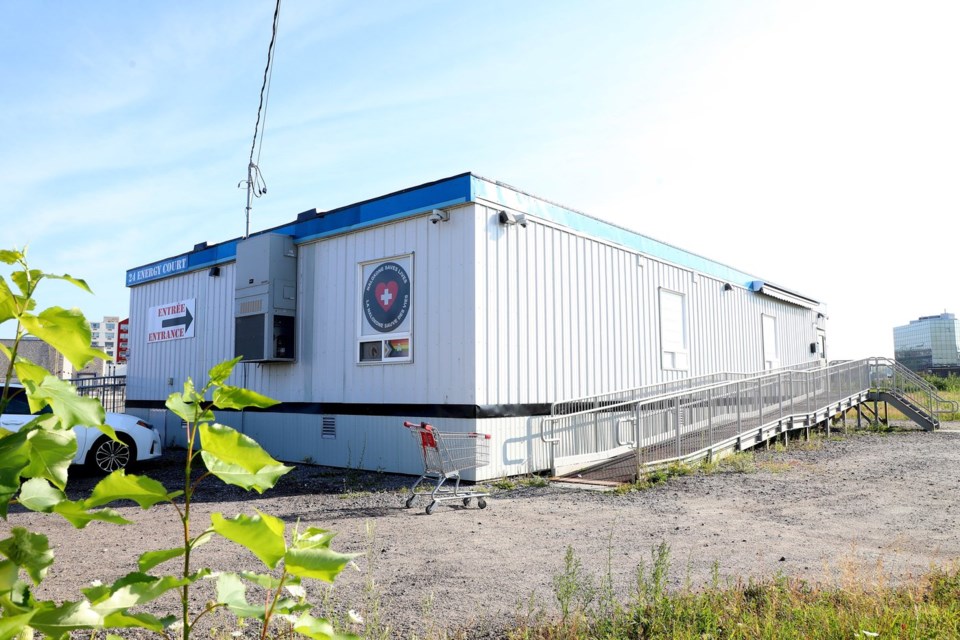TORONTO — Hundreds of people will lose access to supervised consumption sites in Toronto when the province closes five of them next year, which will likely mean more public drug use and more overdoses, a new study suggests.
The Ontario government announced in August that it would close 10 supervised consumption sites across the province next spring because they were too close to schools and daycares.
Five of those sites are in Toronto, leaving another five open. A sixth centre in the city may shut down once its lease runs out next year.
Ontario is shifting away from harm reduction to an abstinence-based model and it intends to launch 19 new "homelessness and addiction recovery treatment hubs" – or HART hubs, as the province calls them – plus 375 highly supportive housing units at a cost of $378 million.
The supervised consumption sites slated for closure are set to be shuttered by March 31, 2025.
Researchers from St. Michael’s Hospital’s MAP Centre for Urban Health Solutions and the Ontario Drug Policy Research Network combed through supervised consumption site data and found that, on average, 1,366 people used the Toronto sites monthly in 2022.
The researchers estimate 561 of those people used the sites that are now slated for closure.
Only 35 of those clients will be within 500 metres of an open supervised consumption site next April, the study said.
"So that means that 38 per cent of current clients will lose access to a site assuming that they won't travel more than 500 metres," said Dr. Ahmed Bayoumi, lead author and a clinician scientist at Unity Health Toronto, which runs St. Michael's Hospital.
"There are going to be a whole lot of people who are currently using drugs in a supervised site who are now not going to have access to that site and that will likely mean more public drug use. It'll likely mean more unsupervised drug use, so more overdoses."
The researchers also looked at whether the sites that will remain open can handle increased visits due to the closures.
"Our best estimate was that sites would have to increase capacity by more than 50 per cent in order to take care of the majority of clients who are losing access," Bayoumi said.
The results of the study will be published on the MAP Centre for Urban Health Solutions website.
Researchers will closely follow the proposed consumption site changes, which will include a ban on new consumption sites and be codified in legislation that has yet to be tabled.
"When the sites actually close, we can look at what happens in terms of EMS calls, what happens in terms of visits to hospital emergency departments and hospital admissions for overdoses and for other complications associated with injecting drugs like wound infections," Bayoumi said.
Health-care workers, advocates and homeless people have all said the closures will lead to more deaths.
Last year, nearly 2,600 Ontarians died because of opioids, a 50 per cent increase from 2019, with fentanyl and its derivatives especially affecting users in the homeless population.
The province announced a fundamental shift in its approach to the opioid crisis in August.
It followed several reviews of supervised consumption sites the government ordered after a Toronto woman was killed by a stray bullet near one of the sites, as a fight broke out between alleged drug dealers.
The reviews suggested keeping the sites open but offered a variety of approaches to deal with several issues, including increased security and stable funding to address staff turnover.
Health Minister Sylvia Jones cited higher crime rates and concerns from neighbours and parents as a reason to do away with supervised consumption sites near schools.
“Communities, parents, and families across Ontario have made it clear that the presence of drug consumption sites near schools and daycares is leading to serious safety problems," Jones's spokeswoman Hannah Jensen said Thursday.
"We agree. That’s why our government is taking action to keep communities safe while supporting the recovery of those struggling with opioid addiction."
The new treatment hubs will offer services such as mental health counselling, addiction support, primary care access and supportive housing.
"We recognize Ontarians deserve more than a health care system that is focused on providing people struggling with addiction with tools to use illegal drugs and our government is taking the next step to create a system of care that prioritizes community safety, treatment and recovery by investing $387 million to create HART hubs," Jensen said.
Jones has previously said no one will die because of the harm-reduction changes.
This report by The Canadian Press was first published Nov. 7, 2024.
Liam Casey, The Canadian Press



